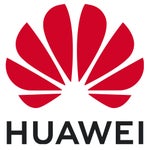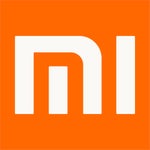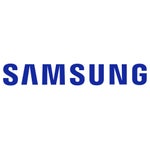News
Samsung Galaxy S25 Edge's Battery Capacity Confirmed: Key Insights You Shouldn't Miss
Samsung Galaxy S25 Edge's Battery Capacity Confirmed: Key Insights You Shouldn't Miss
Excitement for the upcoming Samsung Galaxy S25 Edge is reaching new heights as enthusiasts eagerly anticipate its launch. Recent leaks and certifications have unveiled key specifications, particularly regarding its battery capacity. While the S25 Edge promises impressive features, its battery size has sparked discussions about its potential performance. This article delves into the confirmed battery specifications, a comparison with other S25 series models, and the impact on daily usage.
Confirmed Battery Specifications
Rated and Marketed Capacity
Certification listings confirm that the Samsung Galaxy S25 Edge will feature a rated battery capacity of 3,786 mAh, translating to a marketed typical capacity of 3,900 mAh. Surprisingly, this is 100 mAh less than the standard Galaxy S25, raising questions about battery efficiency in real-world usage.
Comparison with the S25 Series
Despite its sleek design, the S25 Edge houses the smallest battery in the S25 lineup, which is unexpected considering its form factor. The compact 5.84mm thickness appears to be a trade-off for battery capacity.
Implications for Battery Life
With a high-refresh-rate 120Hz display, the battery consumption could be a concern. While optimizations in Samsung’s software and Snapdragon 8 Elite SoC may help efficiency, users may need to tweak settings to maximize battery life.
Key Features of the Samsung Galaxy S25 Edge
Performance and Hardware
Beyond the battery, the S25 Edge is expected to deliver powerful performance with:
-
Processor: Snapdragon 8 Elite SoC
-
RAM: 12GB
-
Display: 120Hz refresh rate
-
Camera: 200 MP main sensor
This hardware configuration ensures a smooth experience for multitasking, gaming, and demanding applications.
Charging Capabilities
The S25 Edge supports 25W wired charging, which, while reliable, falls behind competitors that offer significantly faster charging speeds. If you’re wondering how fast charging impacts battery life, check out this detailed guide on phone battery health.
How Does the S25 Edge Compare to Competitors?
With battery performance being a major factor in buying decisions, it’s essential to see how the S25 Edge stacks up against rivals. Below is a comparison of battery-related specifications with competing devices.
|
Feature |
Samsung Galaxy S25 Edge |
OnePlus 11 |
Xiaomi 13 Pro |
Google Pixel 7 Pro |
|
Battery Capacity |
3,900 mAh |
5,000 mAh |
4,820 mAh |
5,000 mAh |
|
Charging Speed |
25W wired |
100W wired |
120W wired |
30W wired |
|
Processor |
Snapdragon 8 Elite SoC |
Snapdragon 8 Gen 2 |
Snapdragon 8 Gen 2 |
Google Tensor G2 |
|
RAM |
12GB |
16GB |
12GB |
12GB |
|
Display Refresh Rate |
120 Hz |
120 Hz |
120 Hz |
120 Hz |
|
Camera Resolution |
200 MP (main) |
50 MP (main) |
50 MP (main) |
50 MP (main) |
|
Weight |
171g |
205g |
229g |
212g |
|
Thickness |
5.84mm |
8.53mm |
8.16mm |
8.9mm |
FAQs About the Samsung Galaxy S25 Edge's Battery
1. What is the confirmed battery capacity of the Samsung Galaxy S25 Edge?
The rated capacity is 3,786 mAh, with a marketed capacity of 3,900 mAh.
2. How does the S25 Edge's battery compare to the Galaxy S25?
The S25 Edge has a slightly smaller battery than the Galaxy S25, which also features a 3,900 mAh capacity.
3. Will the S25 Edge support fast charging?
Yes, it will support 25W wired charging, but it lags behind some competitors in charging speed.
4. What are the main selling points of the S25 Edge?
Its sleek design, high-refresh-rate display, and powerful processor make it a standout, even though battery capacity isn’t its strongest feature.
Related Articles
Conclusion: Is the Samsung Galaxy S25 Edge Worth It?
-
As anticipation builds for the Samsung Galaxy S25 Edge, it’s evident that while the device boasts high-end performance and an ultra-slim design, its battery capacity may raise concerns.
-
The 3,900 mAh battery is adequate but falls short compared to rivals, especially considering the power demands of its 120Hz display and top-tier processor.
-
Ultimately, buyers should weigh the trade-offs between design, power, and battery longevity before making a decision.












